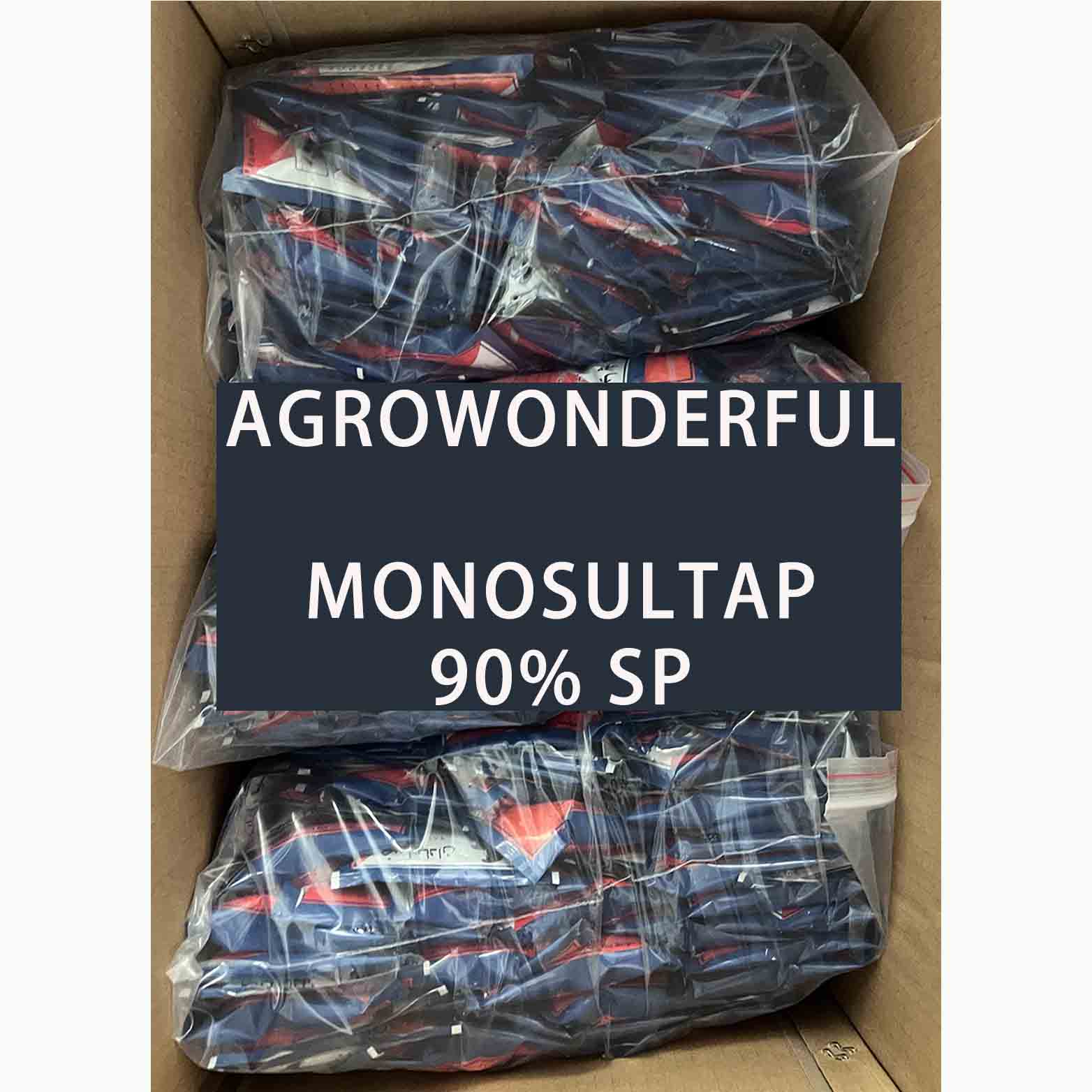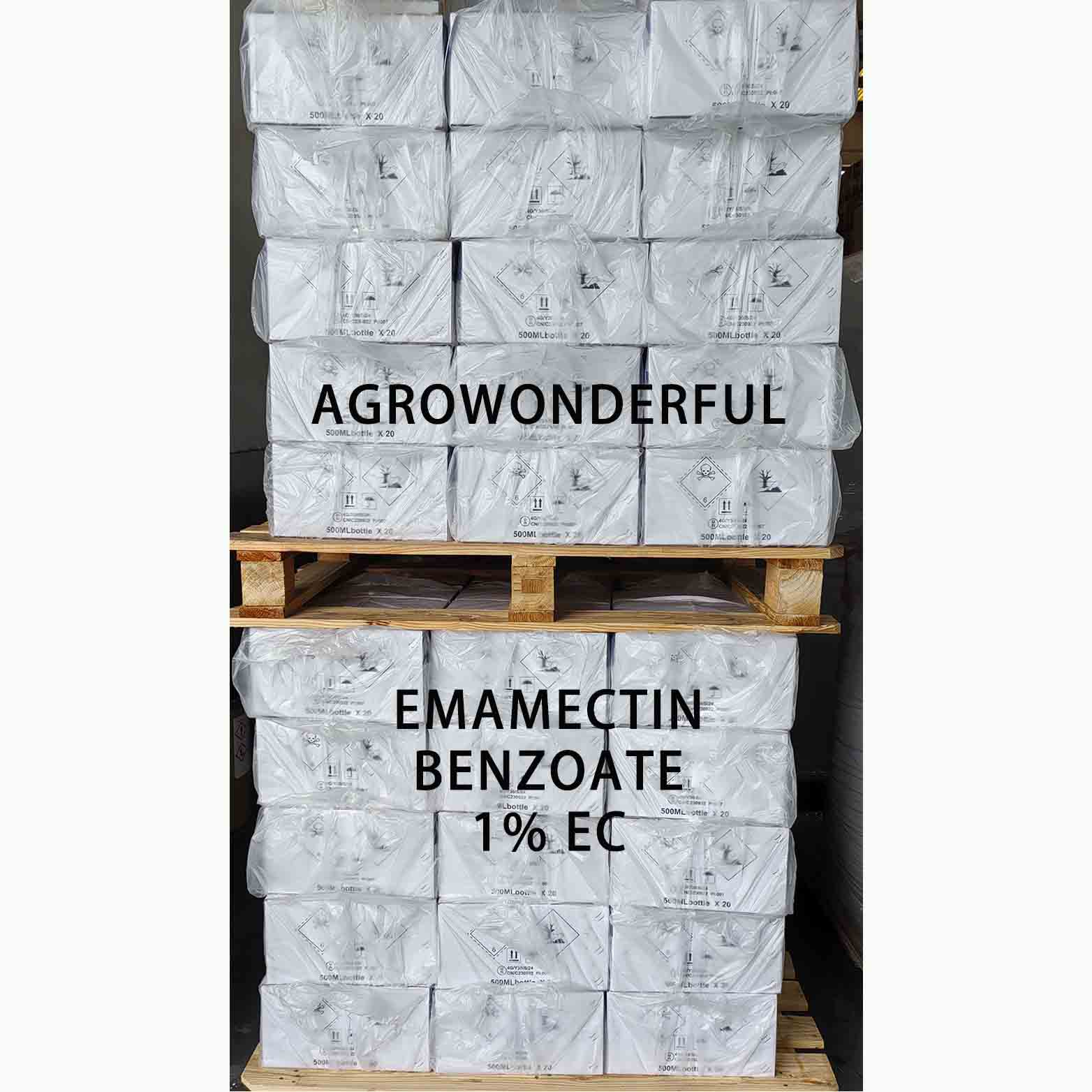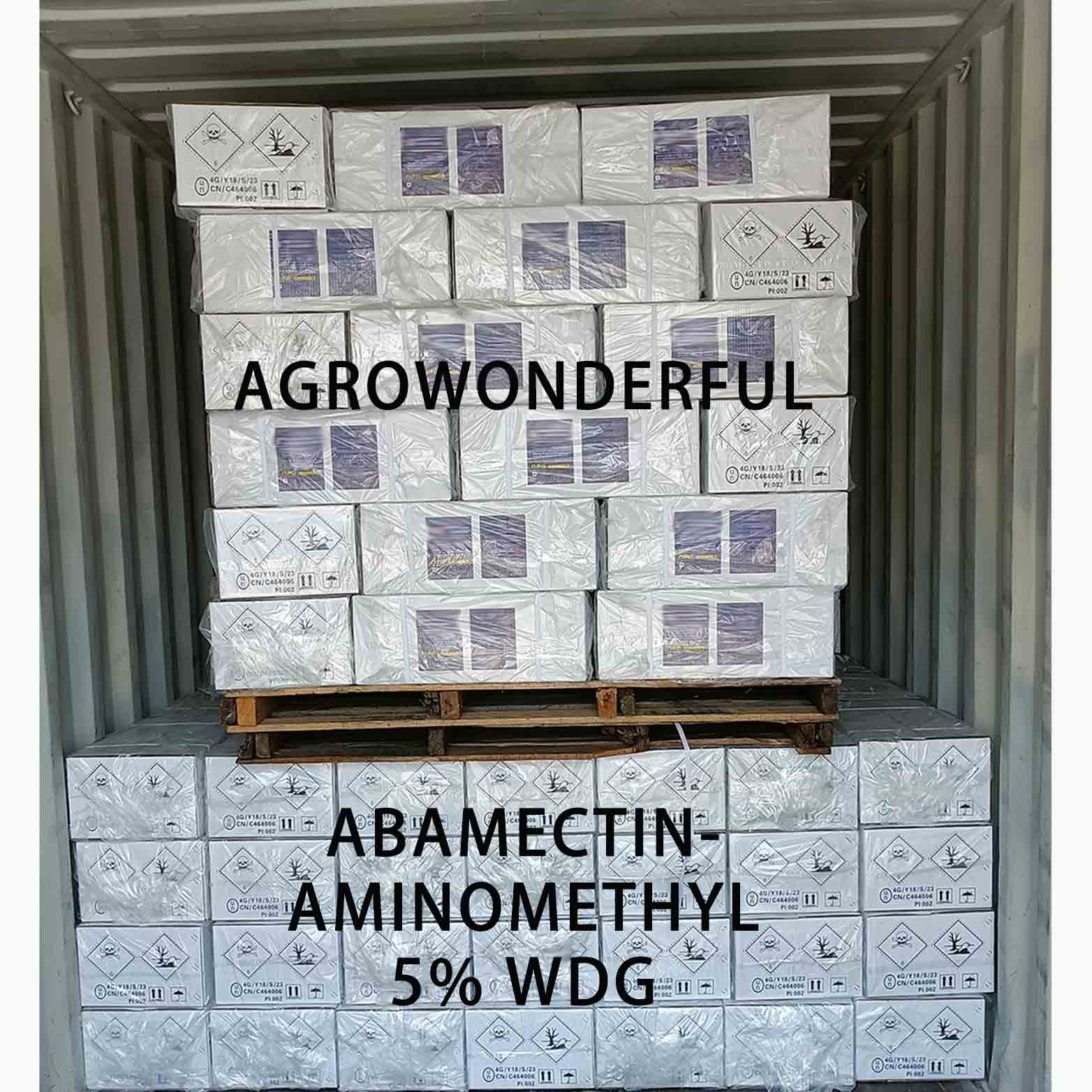



NOMENCLATURE
Common name deltamethrin (BSI, draft E-ISO); deltamhrine ((f) draft F-ISO)
IUPAC name (S)-a-cyano-3-phenoxybenzyl (1R,3R)-3-(2,2-dibromovinyl)-2,2-dimethylcyclopropanecarboxylate
Roth: (S)-a-cyano-3-phenoxybenzyl (1R)-cis-3-(2,2-dibromovinyl)-2,2-dimethylcyclopropanecarboxylate
Chemical Abstracts name [1R-[1a(S*),3a]]-cyano(3-phenoxyphenyl)methyl 3-(2,2-dibromoethenyl)-2,2-dimethylcyclopropanecarboxylate
Other names decamethrin* (rejected common name proposal) CAS RN [52918-63-5]; [52820-00-5] ((RS)- (1R)-cis- isomer pair) EEC no. 258-256-6 Development codes NRDC 161; RU 22 974 (Roussel Uclaf); AE F032640 (AgrEvo) Official codes OMS 1998
PHYSICAL CHEMISTRY
Composition Tech. produced industrially by Aventis contains ?8% deltamethrin (i.e. the single isomer). Mol. wt. 505.2 M.f. C22H19Br2NO3 Form Colourless crystals. M.p. 100-102 Under u.v. irradiation and in sunlight, a cis-trans isomerisation, splitting of the ester bond, and loss of bromine occur. More stable in acidic than in alkaline media; DT50 2.5 d
COMMERCIALISATION
History This single isomer, first described by M. Elliott et al. (Nature (London), 1974, 248, 710), and reviewed in Deltamethrin Monograph and by J. Tessier (Chem. Ind., 1984, p. 199) was introduced by Roussel Uclaf (now Bayer CropScience). Patents GB 1413491 to NRDC Manufacturers Agrochem; Bayer CropScience; Bilag; Fertiagro; Gharda;shanghai agrowonderful
APPLICATIONS
Biochemistry Like all pyrethroids, prevents the sodium channels from functioning, so that no transmission of nerve impulses can take place. Mode of action Non-systemic insecticide with contact and stomach action. Fast-acting. Uses A potent insecticide, effective by contact and ingestion against a wide range of pests. Crop protection uses include: Coleoptera (2.5-7.5 g/ha), Heteroptera (5.0-7.5 g/ha), Homoptera (6.2-12.5 g/ha), Lepidoptera (5.0-21 g/ha) and Thysanoptera (5-10 g/ha) in cereals, citrus, cotton, grapes, maize, oilseed rape, soya beans, top fruit and vegetables. It controls Acrididae (5.0-12.5 g/ha), and is recommended against locusts. Soil surface sprays (2.5-5.0 g/ha) control Noctuidae. It is used against indoor crawling and flying insects (12.5 mg/m2) and pests of stored grain (0.25-0.5 g/t) and timber (Blattodea, Culicidae, Muscidae). Dip or spray (12.5-75 mg/l), and pour-on (0.75 mg/kg b.w.) applications give good control of Muscidae, Tabanidae, Ixodidae and other Acari on cattle, sheep and pigs, etc. Formulation types DP; EC; EG; EW; GR; HN; PO; SC; SL; TB; UL; WG; WP. Selected products: 'Butox' (veterinary use) (Intervet); 'Decis' (crop protection uses) (Bayer CropScience); 'Delta' (Nagarjuna Agrichem); 'Deltamix' (Agrimix); 'Deltarin' (Vapco); 'Deltarocca' (Rocca); 'Keshet' (Makhteshim-Agan); 'Kordon' (environmental health uses) (Bayer CropScience); 'K-Othrine' (environmental health uses) (Bayer CropScience); 'Sadethrin' (Sanonda); 'Shastra' (Devidayal); 'Thrust' (Crop Health); 'Videci' (Vipesco); mixtures: 'Multi-Fog DTP' (+ piperonyl butoxide+ tetramethrin) (Trithin)
OTHER PRODUCTS
'Bandu' (Cheminova); 'Bitam' (crop protection uses) (Bayer CropScience); 'Cislin' (environmental health uses) (Bayer CropScience); 'Decirin' (Chemvet); 'Decistab' (Bayer CropScience); 'Delete' (public health) (Vapco); 'Delsekte' (environmental health uses) (Bayer CropScience); 'Deltaland' (Landgold); 'Flythrin' (Agrochem); 'K-Otek' (environmental health uses) (Bayer CropScience); 'Pearl Micro' (Bayer CropScience); 'Terminator' (public health) (Vapco); 'Tess' (crop protection uses) (Bayer CropScience); 'Thripstick' (Aquaspersions) mixtures: 'Adage' (+ pirimicarb) (Bayer CropScience); 'Akaridecis' (+ propargite) (Bayer CropScience); 'Best' (+ pirimicarb) (Bayer CropScience); 'Crackdown' (+ bioallethrin S-cyclopentenyl isomer) (environmental health uses) (Bayer CropScience); 'Dadeci' (+ buprofezin) (Bayer CropScience); 'Decis D' (+ dimethoate) (Bayer CropScience); 'Decisdan' (+ endosulfan) (Bayer CropScience); 'Decisprime' (+ chlorpyrifos-methyl) (Bayer CropScience); 'Decisquick' (+ heptenophos) (Bayer CropScience); 'Deltaphos' (+ triazophos) (Bayer CropScience); 'Evidence' (+ pirimicarb) (Bayer CropScience); 'K-obiol' (+ piperonyl butoxide) (Bayer CropScience); 'Mieling' (+ phoxim) (Zhong-Xi); 'Patriot' (+ pirimicarb) (Bayer CropScience) Discontinued products: 'Crackdown' * (AgrEvo EH); 'Sputop' * (Coopers)
ANALYSIS
Product analysis by lc with u.v. detection (AOAC Methods, 17th Ed., 991.03, 7.5.05) or by hplc (CIPAC Handbook, 1988, D, 57; M. Vaysse et al., Anal. Methods Pestic. Plant Growth Regul., 1984, 13, 53). Residues determined by glc with ECD (AOAC Methods, 17th Ed., 998.01; Man. Pestic. Residue Anal., 1987, I, 6, S19; Anal. Methods Residues Pestic., 1988, Part I, M11; A. Ambrus et al., J. Assoc. Off. Anal. Chem., 1981, 64, 733; P. G. Baker & P. Bottomley, Analyst (London), 1982, 107, 206; P. Bottomley & P. G. Baker, ibid., 1984, 109, 85).
MAMMALIAN TOXICOLOGY
Reviews See A. J. Gray & D. M. Soderlund, Chapt. 5 in "Insecticides". FAO/WHO 89, 91 (see part 2 of the Bibliography). IARC ref. 53 class 3 Oral Acute oral LD50 for rats ranges from 135->5000 mg/kg, depending upon carrier and conditions of the study; for dogs >300 mg/kg. Acute oral LD50 for formulations in rats: >2000 mg (of 15 g/l EC)/kg; 445 mg (of 25 g/l EC)/kg; >5000 mg (of 5 g/l UL)/kg; >16 000 mg (of 25 g/kg WP)/kg; >40 000 mg (of 25 g/l SC)/kg. Skin and eye Acute percutaneous LD50 for rats and rabbits >2000 mg/kg. Non-irritating to skin; mild eye irritant (rabbits). Inhalation LC50 (4 h) for rats 2.2 mg/l air; (1 h) >4.6 mg/l air (micronised). NOEL (2 y) for mice 12, rats 1, dogs 1 mg/kg b.w. ADI (JMPR) 0.01 mg/kg b.w. [2000]. Other Non-mutagenic and non-teratogenic (mice, rats, rabbits). Toxicity class WHO (a.i.) II; EPA (formulation) II EC classification T; R23/25| N; R50, R53
ECOTOXICOLOGY
Birds Acute oral LD50 for mallard ducks >4640 mg/kg. Dietary LC50 (8 d) for mallard ducks >8039, quail >5620 mg/kg diet. NOEL for reproduction for mallard ducks >70, bobwhite quail >55 mg/kg daily. Fish Toxic to fish under laboratory conditions; LC50 (96 h) for rainbow trout 0.91, bluegill sunfish 1.4 mg/l. Not toxic to fish under natural conditions. Daphnia LC50 (48 h) 3.5 mg/l. Algae EC50 (96 h) for algae (Selenastrum capricornutum) >9.1 mg/l. Low LD50 and LC50 values under laboratory conditions do not represent a significant hazard to aquatic fauna in normal field use. Bees Toxic to bees, LD50 (oral) 79 ng/bee; (contact) 51 ng/bee. Low LD50 and LC50 values under laboratory conditions do not represent a significant hazard to bees in normal field use. Worms LC50 (14 d) for earthworms >1290 mg/kg soil.
ENVIRONMENTAL FATE
EHC 97 (WHO, 1990). Animals In rats, following oral administration, elimination occurs within 2-4 days. The phenyl ring is hydroxylated, the ester bond hydrolysed, and the acid moiety is eliminated as the glucuronide and glycine conjugates. Plants No uptake through leaves and roots - non-systemic compound. No major metabolites, except in oily crops, where trans-deltamethrin is part of the residue definition. Soil/Environment In soil, undergoes microbial degradation within 1-2 weeks. Kd 3790-30 000, Koc 4.6 ?105-1.63 ?107 cm3/g, confirms strong adsorption by soil colloids and no risk of leaching. DT50 (lab., aerobic) 21-25 d, (anaerobic) 31-36 d. In field, DT50 <23 d. Soil photolysis DT50 9 d. No incidence on soil microflora and nitrogen cycle.
關鍵字: deltamethrin; most popular;insecticide pesticid;top 1 ;factory price;
Shanghai Agrowonderful Industrial Co., Ltd is TOP 1 pesticide & insecticide & herbicide & weed killer & grass killer & agrochemicals manufacturer & factory in China